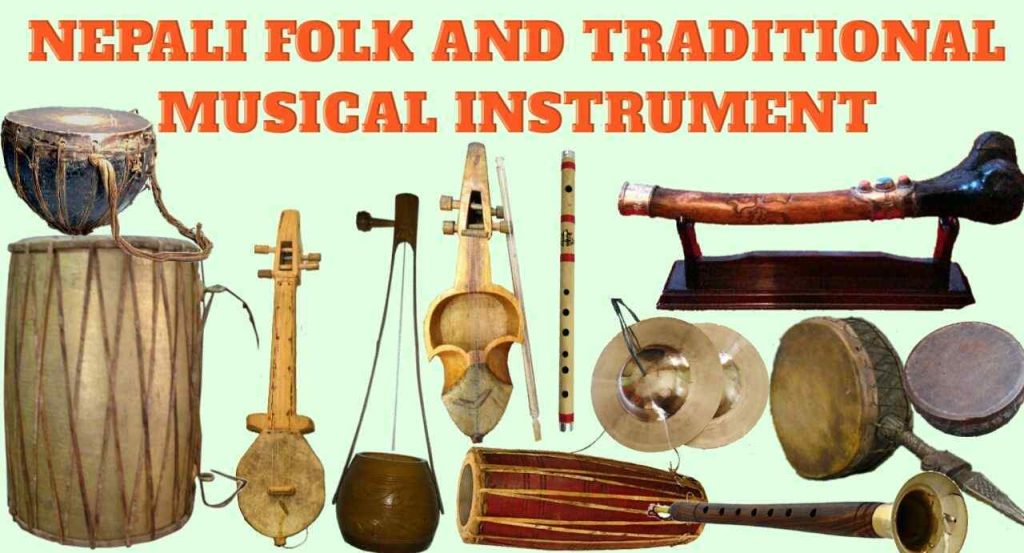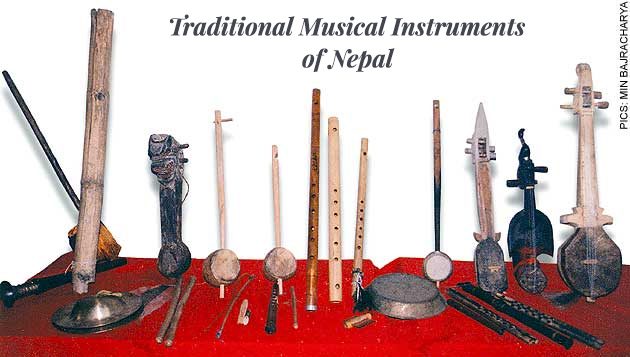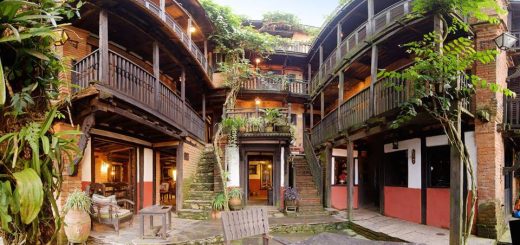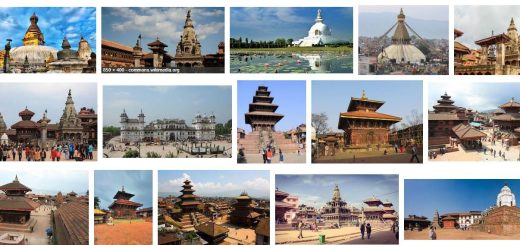Nepal Boasts a Diverse Cultural Heritage
Nestled in the lap of the mighty Himalayas, Nepal is a land of incredible cultural diversity. This small South Asian nation is home to over 100 ethnic groups, each with its own unique customs, traditions, and way of life. From the bustling streets of Kathmandu to the remote mountain villages, Nepal’s rich tapestry of cultures and ethnicities weaves a captivating story of unity in diversity.
Contents
A Mosaic of Ethnicities:
Nepal is a melting pot of various ethnic groups, and each community contributes to the vibrant cultural fabric of the nation.

The major ethnic groups in Nepal include the Gurungs, Sherpas, Tharus, Newars, Tamangs, Magars, Limbus, Rais, and many more. Each group has its own distinct language, dress, music, dance, and religious practices.
Here are some of the Major Ethnic Group of Nepal
| Ethnic Group | Percentage of Population | Origin and Background |
|---|---|---|
| Khas (Bahun/Chhetri) | 30% | Historically dominant ruling and warrior class |
| Magar | 7% | Indigenous to Nepal; primarily concentrated in western Nepal |
| Tharu | 7% | Indigenous to Nepal; primarily in the Terai region |
| Tamang | 5% | Indigenous to Nepal; predominantly in the central hills |
| Newar | 5% | Indigenous to Nepal; Kathmandu Valley dwellers |
| Rai | 2.8% | Indigenous to Nepal; mostly found in the eastern hills |
| Gurung | 2.2% | Indigenous to Nepal; primarily in the western hills |
| Limbu | 1.8% | Indigenous to Nepal; predominantly in the eastern hills |
| Sherpa | 0.9% | Indigenous to Nepal; known for their mountaineering expertise |
| Maithili | 0.8% | Indigenous to Nepal; concentrated in the eastern Terai region |
| Others | 37.5% | Includes various smaller ethnic groups and communities |
Language and Literature:
Nepal’s ethnic diversity is reflected in its linguistic richness. The country recognizes more than 120 languages, making it a linguist’s paradise. Nepali, the official language, is widely spoken and understood throughout the country. Additionally, various ethnic communities have their own mother tongues, preserving their cultural heritage through oral traditions, folk tales, and songs. The literary traditions of Nepal are as diverse as its languages, with ancient texts and scriptures being written in different dialects.
Festivals and Celebrations:
The cultural mosaic of Nepal is perhaps most vividly displayed during its numerous festivals and celebrations. From the grandeur of Dashain, the biggest Hindu festival, to the spiritual fervor of Tihar and the vibrant colors of Holi, these festivities bring communities together, showcasing their customs and religious practices. The Newar community, concentrated in the Kathmandu Valley, is known for its rich cultural festivals like Bisket Jatra, Indra Jatra, and the New Year celebration of Nepal Sambat.
Here are some of the biggest festival in Nepal
| Festival | Specialty |
|---|---|
| Dashain | The biggest and most important Hindu festival in Nepal; symbolizes the victory of good over evil; celebrated with family gatherings, feasts, and animal sacrifices |
| Tihar | Also known as Deepawali or the festival of lights; celebrates the bond between humans and animals; involves lighting oil lamps, worshipping of animals, and exchanging of gifts |
| Holi | Festival of colors; marks the arrival of spring; people throw colored powders and water at each other, symbolizing joy, love, and unity |
| Teej | Celebrated by Hindu women; involves fasting, singing, dancing, and prayers for the well-being of their husbands and marital bliss |
| Chhath | Dedicated to the worship of the sun god; observed by fasting and performing rituals near rivers or water bodies |
| Bisket Jatra | Celebrated in Bhaktapur; marks the Nepali New Year; involves the pulling of chariots, mask dances, and other cultural activities |
| Indra Jatra | Celebrated in Kathmandu; honors Indra, the king of gods; includes chariot processions, masked dances, and the display of the “Living Goddess” Kumari |
| Buddha Jayanti | Celebrates the birth, enlightenment, and death of Lord Buddha; observed by visiting Buddhist shrines, meditating, and chanting |
| Gai Jatra | Known as the “Cow Festival”; a procession of cows is taken out to commemorate the deceased; people wear humorous costumes and perform satirical acts |
| Maha Shivaratri | Devoted to Lord Shiva; observed with fasting, night-long vigils, and visits to Shiva temples |
| Ghode Jatra | Celebrated in Kathmandu; a horse parade held to ward off evil spirits; includes horse racing, acrobatics, and other equestrian activities |
Art, Music, and Dance:
Nepalese art, music, and dance are deeply intertwined with its cultural heritage.

Each ethnic group has its own traditional art forms and craftsmanship, which have been passed down through generations. Intricate woodcarvings, stone sculptures, Thangka paintings, and metalwork showcase the artistic skills and aesthetics of the Nepalese people. Traditional music instruments like the sarangi, madal, and bansuri produce enchanting melodies, while folk dances like the Maruni, Dhime, and Tamang Selo showcase the grace and rhythm of different communities.

Religious Harmony:
Religion plays a pivotal role in Nepalese culture, and the country is a harmonious blend of various faiths. Hinduism, Buddhism, Islam, and other religions coexist peacefully, with numerous temples, monasteries, mosques, and gumbas dotting the landscape. The sacred Hindu pilgrimage site of Pashupatinath, the Buddhist stupas of Boudhanath and Swayambhunath, and the birthplace of Lord Buddha in Lumbini are just a few examples of the religious landmarks that attract pilgrims from around the world.
Preservation and Promotion:
Nepal recognizes the significance of its diverse cultural heritage and takes steps to preserve and promote it. The government, along with various cultural organizations, supports initiatives to safeguard traditional practices, languages, and art forms. Efforts are made to document and research different ethnicities, ensuring that their cultural legacy endures for future generations.
Nepal stands as a testament to the richness and diversity of human culture. With over 100 ethnic groups, each contributing its own distinct flavor to the cultural landscape, the country showcases the beauty of unity in diversity. From the towering Himalayas to the fertile plains, Nepal’s cultural heritage






It’s really a nice and helpful piece of info. I’m glad that you shared this useful information with us. Please keep us informed like this. Thanks for sharing.
This is the right blog for anyone who wants to find out about this topic. You realize so much its almost hard to argue with you (not that I actually would want…HaHa). You definitely put a new spin on a topic thats been written about for years. Great stuff, just great!
Hi, I do think this is an excellent website. I stumbledupon it 😉 I’m going to return yet again since I book marked it. Money and freedom is the best way to change, may you be rich and continue to help others.
There’s certainly a great deal to learn about this subject. I like all the points you made.
It’s perfect time to make a few plans for the longer term and it is time to be happy. I’ve learn this post and if I could I wish to recommend you some interesting things or advice. Maybe you could write subsequent articles relating to this article. I desire to read more things about it!
Здесь представлены последние коды для Melbet.
Воспользуйтесь ими зарегистрировавшись на платформе для получения максимальную награду при стартовом взносе.
Плюс ко всему, доступны промокоды в рамках действующих программ для лояльных участников.
как ввести промокод в мелбет
Следите за обновлениями на странице бонусов, и будьте в курсе эксклюзивные бонусы для Мелбет.
Любой код обновляется на валидность, что гарантирует надежность во время активации.
Here, you can discover lots of slot machines from famous studios.
Players can try out retro-style games as well as feature-packed games with vivid animation and bonus rounds.
Whether you’re a beginner or a casino enthusiast, there’s something for everyone.
play bonanza
Each title are available 24/7 and designed for PCs and tablets alike.
You don’t need to install anything, so you can jump into the action right away.
Platform layout is easy to use, making it quick to explore new games.
Register now, and enjoy the world of online slots!
Within this platform, you can discover a variety virtual gambling platforms.
Whether you’re looking for well-known titles new slot machines, there’s something for every player.
All featured casinos are verified to ensure security, allowing users to gamble peace of mind.
free spins
Moreover, this resource offers exclusive bonuses along with offers targeted at first-timers including long-term users.
With easy navigation, finding your favorite casino happens in no time, enhancing your experience.
Stay updated regarding new entries with frequent visits, because updated platforms come on board often.
This design is spectacular! You definitely know how to keep a reader entertained. Between your wit and your videos, I was almost moved to start my own blog (well, almost…HaHa!) Wonderful job. I really loved what you had to say, and more than that, how you presented it. Too cool!
Oh my goodness! an incredible article dude. Thank you Nonetheless I am experiencing situation with ur rss . Don’t know why Unable to subscribe to it. Is there anyone getting equivalent rss downside? Anybody who is aware of kindly respond. Thnkx